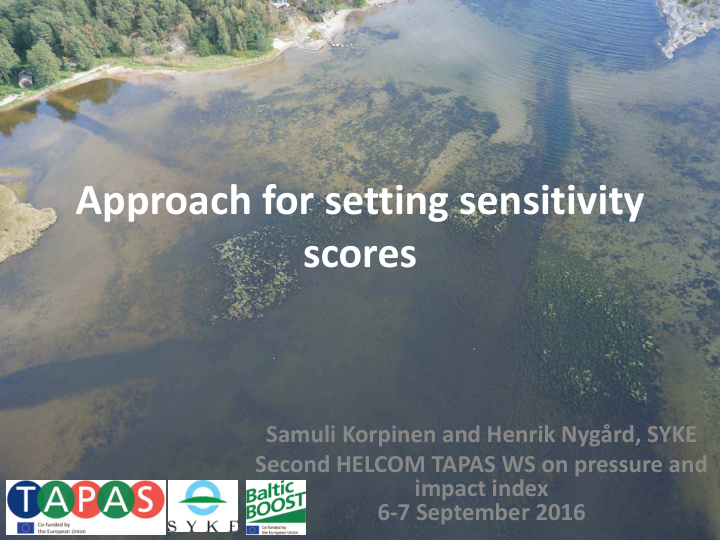



Approach for setting sensitivity scores Samuli Korpinen and Henrik Nygård, SYKE Second HELCOM TAPAS WS on pressure and impact index 6-7 September 2016
Literature review Objective: informing how environmental targets can be set for benthic habitats. ~100 studies included (peer-reviewed, grey literature) = ~270 records data sets evaluated for case studies A synthesis will be made A catalogue of impacts
What type of sensitivity information we collect? Activity Pressure type Pressure intensity Vertical impact in sediment Pressure frequency Target feature Respective habitat Impact type Spatial gradient Impact quantity Spatial extent Type of study Temporal extent Recovery time Location Reference
How we plan to synthesize the results? 1. Compare similar parameters and features. 2. Synthesize observed impacts. 3. Link activities/parameters to MSFD pressures estimate magnitude of pressure based on observed impacts. 4. Rank activities/parameters in the order of pressure magnitude. 5. Synthesize spatial and temporal extent, recovery times.
Links with the TAPAS expert survey BalticBOOST TAPAS expert literature review survey Spatial extent of Impact distance the impact Intensity and spatial Impact type attenuation of the impact Quantitative Tolerance and sensitivity (high-low) impacts Recoverability Recoverability (high-low)
How can we combine these? • Sensitivity scores similar in both approaches (i.e. same classes and similar definitions of the classes). • Compare the results from the two approaches (i.e. comparing expert results with highest confidence and with corresponding results from literature studies). • Integration: – if both approaches give a similar sensitivity, then that becomes the sensitivity score; – if the sensitivities differ, then the result with higher confidence and less variability is used; – if none of the above applies but there is more literature evidence, then the literature information is used. – if there is no literature information, expert survey results are used. • Confidence of the integrated score decreases in the same order as the steps above.
Recommend
More recommend